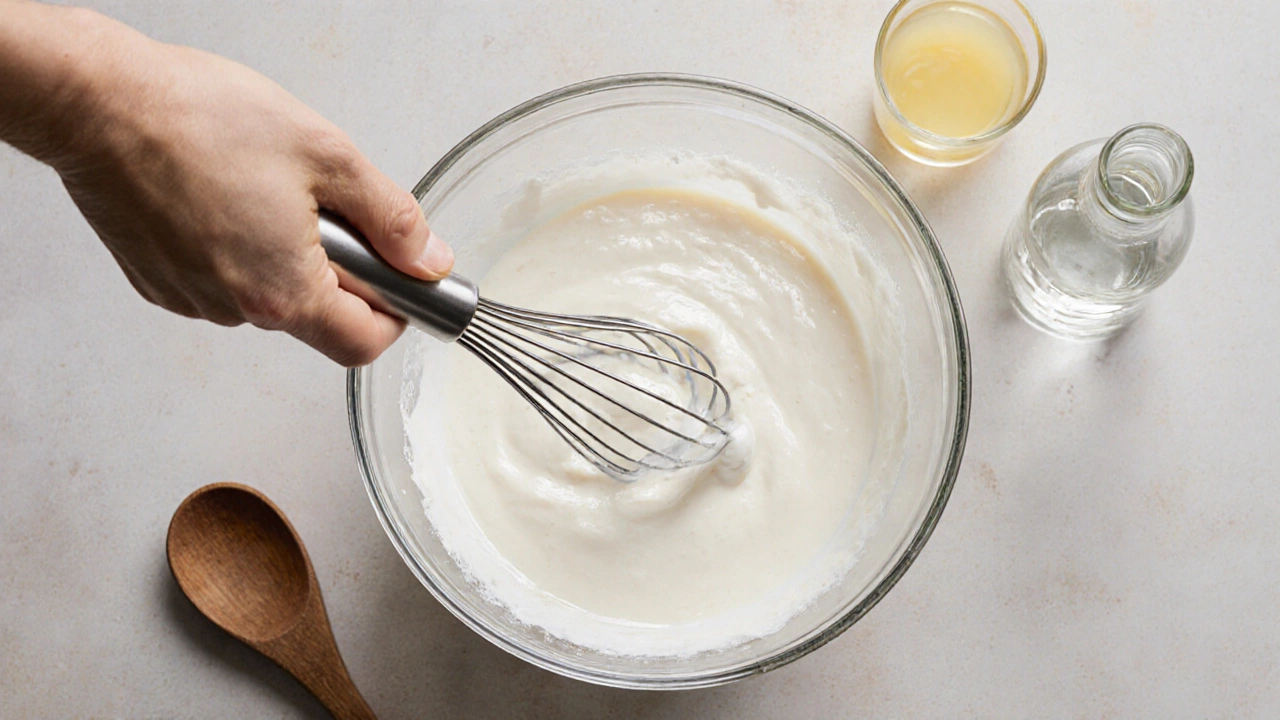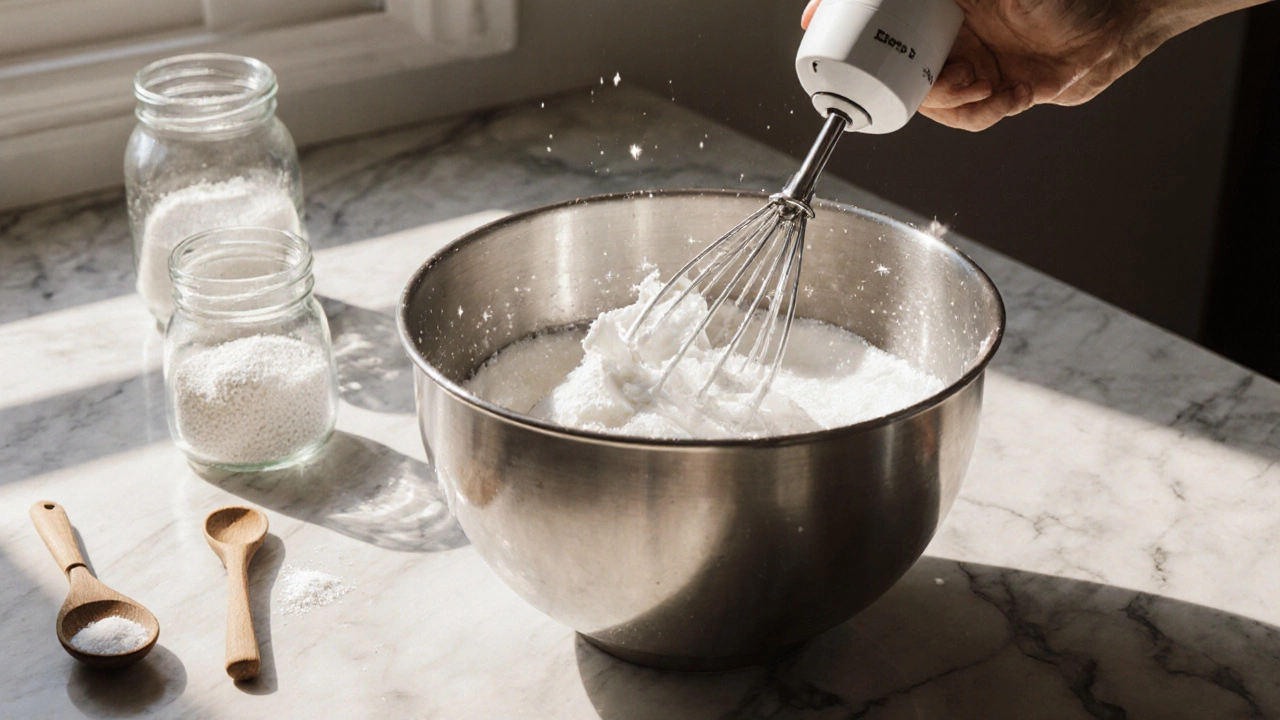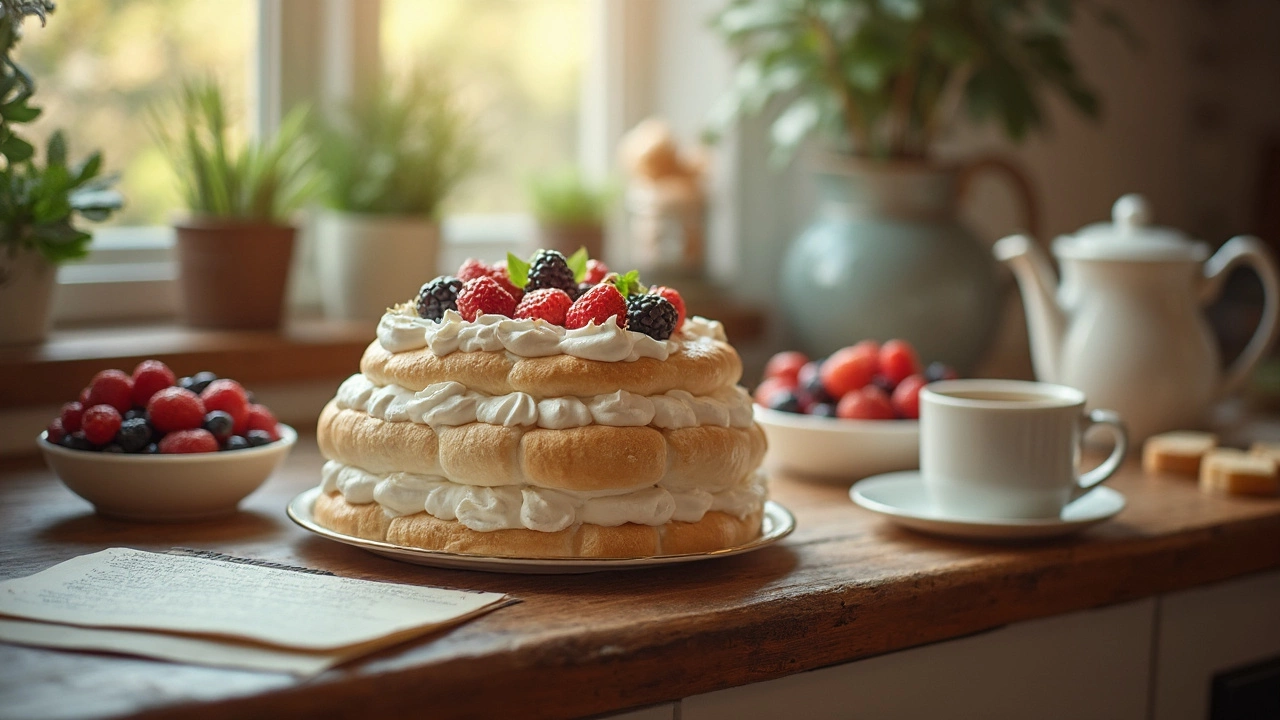
How to Fix a Weeping Pavlova: Simple Fixes for a Soggy Meringue
Learn how to fix a weeping pavlova with simple, proven steps to save your soggy meringue. Prevent moisture issues with sugar tips, oven tricks, and cooling methods that actually work.
If you love a crisp shell with a soft, marshmallow center, pavlova is the answer. This dessert looks fancy but is simple enough for a weekend bake. Below you’ll find the basics, a few shortcuts, and ideas for toppings that keep it fresh and tasty.
The foundation of any pavlova is the meringue. You only need three things: egg whites, sugar, and a pinch of salt. Using room‑temperature eggs helps the whites whip up faster and reach more volume. A tablespoon of corn starch or vinegar can be added to stabilize the mix and keep the center soft.
For the topping, fresh fruit works best. Kiwi, strawberries, blueberries, and passion fruit add a bright flavor and a splash of color. If you want extra richness, a dollop of whipped cream or a drizzle of honey is all you need.
1. Preheat your oven to 150°C (300°F) and line a baking sheet with parchment paper. Draw a 20 cm (8‑inch) circle on the paper – this is your guide.
2. In a clean bowl, beat the egg whites on medium speed until they become frothy. Add a pinch of salt and then increase to high speed. Keep beating until soft peaks form.
3. Gradually add the sugar, one spoonful at a time. Wait until each addition is fully dissolved before adding the next. When the mixture looks glossy and forms stiff peaks, it’s ready.
4. Sprinkle the corn starch and a few drops of vinegar over the meringue, then fold gently with a spatula. This step prevents cracks while keeping the center fluffy.
5. Spoon the meringue onto the drawn circle, shaping the edges slightly lower than the center. This creates the classic “well” for fruit.
6. Bake for 60‑70 minutes. The outside should be dry and just a shade darker, while the inside stays soft. Turn off the oven and let the pavlova cool inside with the door slightly open. This gradual cooling stops sudden shrinkage.7. Once cool, top with a thin layer of whipped cream, then arrange your chosen fruit. Serve immediately or store in the fridge for up to a day.
Tips to avoid common problems: make sure no yolk gets into the whites, keep any grease away from the bowl, and use a sugar that dissolves quickly, like caster sugar. If the meringue cracks, the crust may be too thin – add a bit more sugar next time.
Want a twist? Try adding a splash of vanilla extract to the meringue or swapping some fruit for fresh berries and a drizzle of chocolate. The basic recipe stays the same, so you can experiment without starting over.
Now you have a reliable pavlova recipe you can pull out for birthdays, holidays, or a simple weekend treat. It’s light, looks impressive, and lets you showcase whatever fruit is in season. Happy baking!

Learn how to fix a weeping pavlova with simple, proven steps to save your soggy meringue. Prevent moisture issues with sugar tips, oven tricks, and cooling methods that actually work.

Discover the essential ingredients for a perfect pavlova, why each matters, and tips to achieve a crisp, airy meringue topped with fresh fruit and cream.

Learn the key differences between meringue and pavlova, from ingredients and texture to baking methods and serving ideas, plus tips, recipes, and FAQs.

Thinking about making pavlova ahead of time? This article breaks down whether you can make pavlova a day in advance and how to store it without ruining that crisp shell. You'll learn the science behind meringue, get tips to keep it from turning soggy, and discover ways to keep your dessert impressively fresh. Find out what you should—and shouldn't—do for next-day perfection. Get those practical tricks so your pavlova impresses, no matter when you serve it.